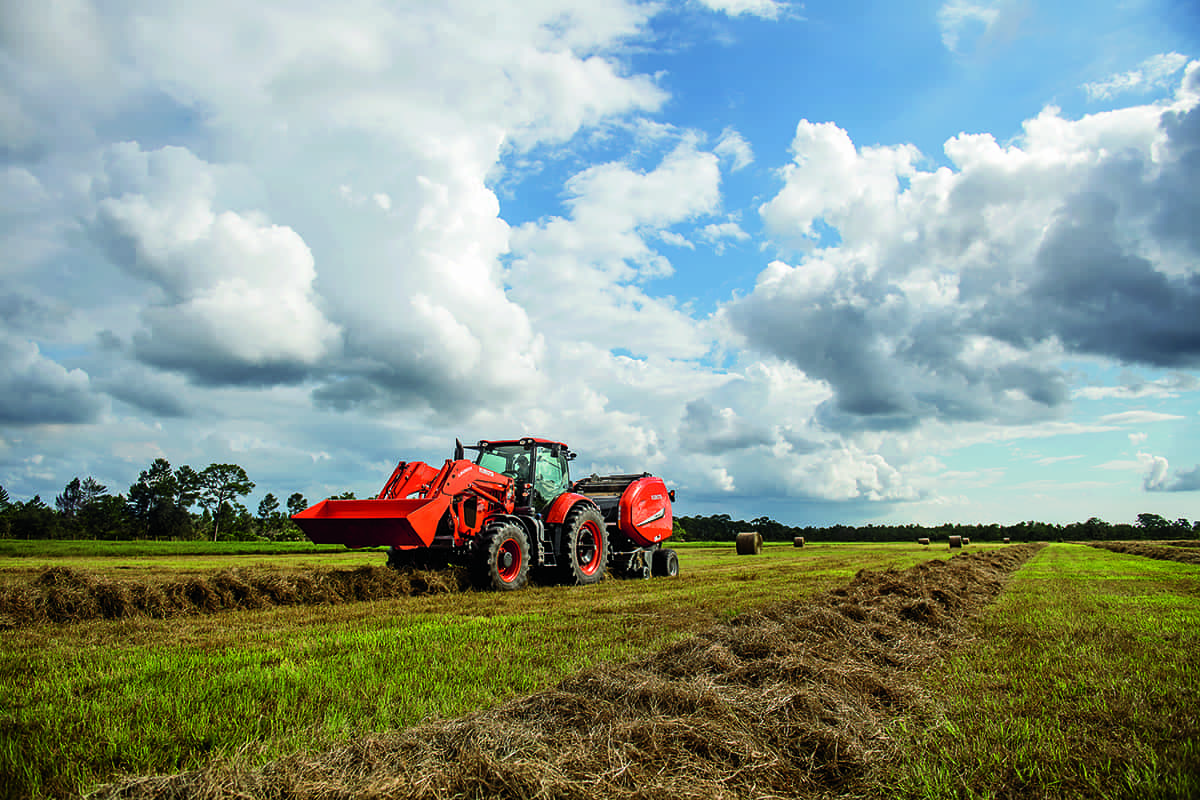Your web browser is out of date.
Please download one of these free, up-to-date browsers for the best experience on our site

Not all bales of hay are created equal. There is more to baling than simply running a baler over cut hay and spitting out a perfect bale. Many factors need to be considered before you can even think about breaking out the baler. Technology can also play a huge role in making perfect bales more often.
Kubota’s Ag Product Specialists are here to help us understand how operators can use proper technique and baling technology to churn out perfect bales every time. Kubota has 12 Ag specialists covering the entire U.S. to assist dealers and customers with M7 and hay tool applications, settings, and operation.
Let’s review these expert tips for making perfect bales with Kubota balers:
#1 – Know Your Density
Kubota balers have an advanced three zone electric density setting system which can be changed from crop to crop in a matter of seconds. It’s important to understand how bale density and conditions will affect crops and adjust your density settings accordingly.
#2 – Windrow Makes the Bale
Windrow size and shape play a bigger role in bale formation than you may think. There is an old saying that the rake operator is the most important person in a hay operation. In many ways this is a very true statement. The rake operator maps out the path that the baler must follow to pick up the cut crop. A straight windrow allows the operator to maneuver the baler through the field with minimal effort while also allowing the crop to feed evenly into the pickup and then into the bale chamber. In fields where straight windrows are not possible, a good rake operator will make generous turns allowing the baler operator to avoid any sharp angled turns that could result in leaving hay on the ground. Ideally, your rake will have a working width wide enough to build a consistent windrow that is the width of the bale chamber. This will minimize the need to weave back and forth to fill the bale chamber and will result in an even, consistent bale.
#3 – Let the Baler Guide You
Pay attention to the driving arrows, steering wheel icon, and bale shape icons. Our system provides operators three visual alerts to know what is transpiring in the bale chamber. This allows operators to make the adjustments to the shape of their bale as they drive along. The sensitivity of the driving arrows can be adjusted easily to meet the requirements of different operators or conditions.
#4 – Stay Alert
Utilize the baler’s built in alerts. The ‘90% Full’ alert helps the operator understand when they should begin finishing off the bale. They will receive another alert signifying ‘Full Bale’ when the bale has reached the predetermined height the operator desires, and the baler begins to automatically wrap.
#5 – Wrap it Up
Set the proper number of net or twine wraps desired. The number of wraps will depend on the type of hay, and the expected length of time it might be stored before feeding, etc. Certain crops, like wheat straw, are spongey and will require more wraps to keep the final bale from bursting open.
The proof in every great bale begins with its shape and density. A well-formed bale with proper density will retain its shape when transported. Getting the density of the bale correct also means you’ll have successfully put more hay into each bale, resulting in less bales you’ll ultimately have to move. Of course, the most important thing to consider when measuring how successfully you’ve baled hay comes down to when the hay is fed to cattle. Healthy hay breeds healthy cattle.